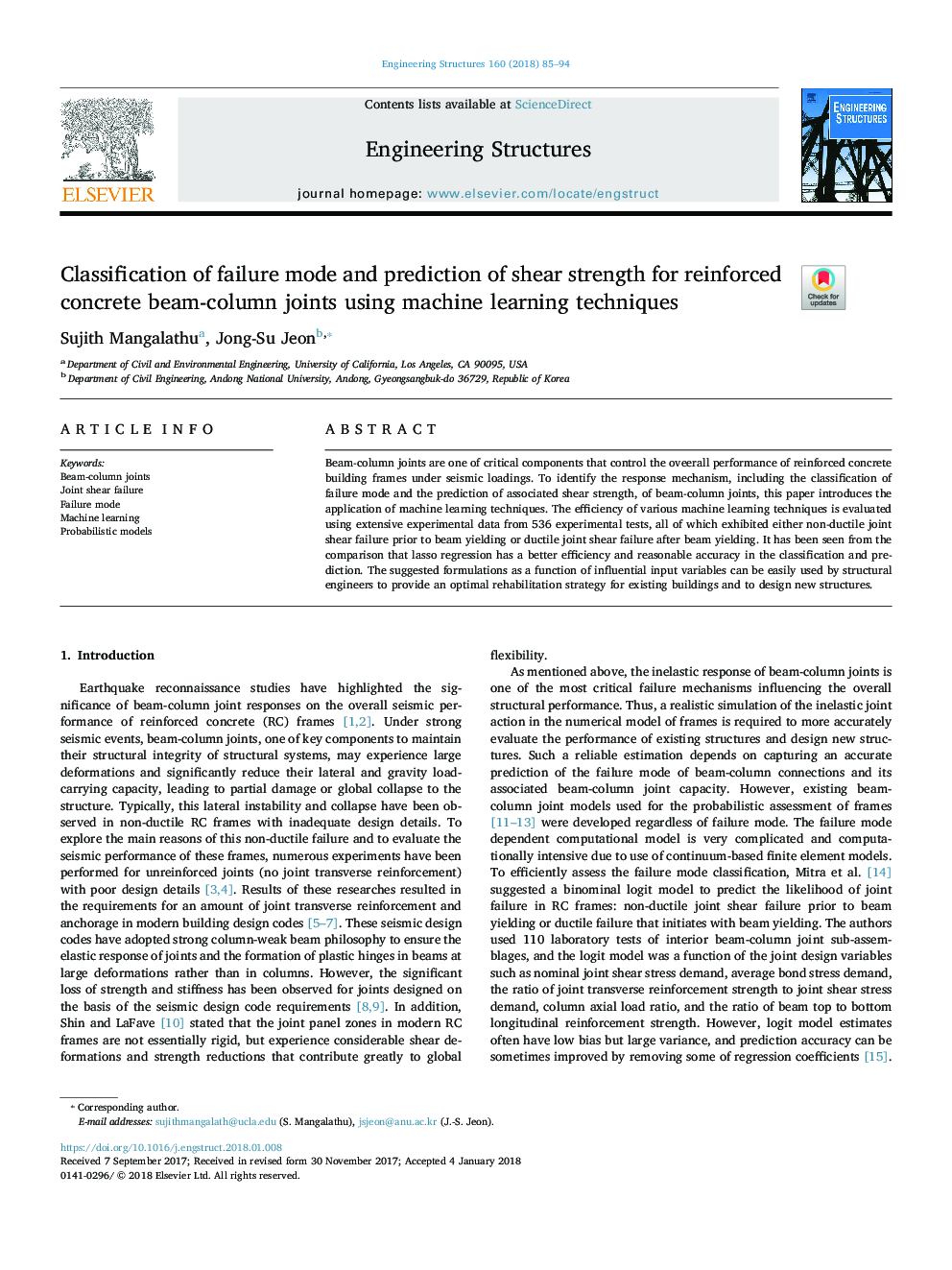| Article ID | Journal | Published Year | Pages | File Type |
|---|---|---|---|---|
| 6738277 | Engineering Structures | 2018 | 10 Pages |
Abstract
Beam-column joints are one of critical components that control the oveerall performance of reinforced concrete building frames under seismic loadings. To identify the response mechanism, including the classification of failure mode and the prediction of associated shear strength, of beam-column joints, this paper introduces the application of machine learning techniques. The efficiency of various machine learning techniques is evaluated using extensive experimental data from 536 experimental tests, all of which exhibited either non-ductile joint shear failure prior to beam yielding or ductile joint shear failure after beam yielding. It has been seen from the comparison that lasso regression has a better efficiency and reasonable accuracy in the classification and prediction. The suggested formulations as a function of influential input variables can be easily used by structural engineers to provide an optimal rehabilitation strategy for existing buildings and to design new structures.
Related Topics
Physical Sciences and Engineering
Earth and Planetary Sciences
Geotechnical Engineering and Engineering Geology
Authors
Sujith Mangalathu, Jong-Su Jeon,
